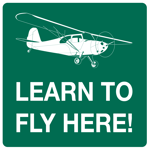At Oshkosh 2021, Decathlon LLC will take delivery of a brand new Super D. The new airplane, N16DV, will have a number of new features (compared to N878AC). It will have a 1,950 lbs. max takeoff weight in normal category, which means that it will be possible to leave with more fuel, as long as the weight is down to 1,800 lbs. before doing aerobatics. We can’t wait to pick the airplane up at Oshkosh and here two weeks before Oshkosh, the status of the airplane is as can be seen in the gallery below.









The airplane will have a baggage door and combined with the higher takeoff weight, this will allow for a cross-country flight with two people and baggage. While the airplane will not (at least initially) be IFR certified, it will have Garmin touch-screen IFR certified instruments, which allow for IFR training and logging of hood time. A planned upgrade will be to add a Garmin GFC-700 autopilot, and while an aerobatic airplane does not really need an autopilot, the autopilot will in the eyes of the FAA, make the airplane a Technical Advanced Aircraft (TAA). A TAA can be used for commercial pilot training! Also, N16DV will have a Hartzell Trailblazer prop, improving climb performance.
















